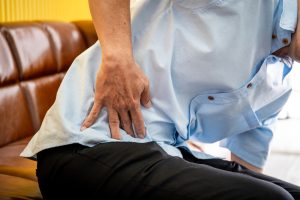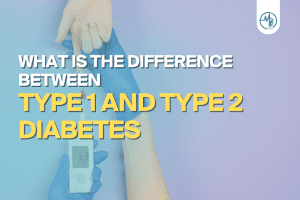Ageing is a universal, predictable, and natural process of the body. It alters the organs and their functions, making them more prone to diseases and complications due to the deterioration that takes place. This biological event is expected in every person, but it does not follow a linear timeline and the different physiological processes of the body are not subject to the same wear and tear. Ageing is highly tissue-specific. Genetics, environmental factors, and lifestyle choices are great determinants in predicting its course. Find out more about healthy ageing in this article!
Understanding Systemic Changes
All systems are altered and function is reduced to different extents.
Gastrointestinal system
The pharyngeal muscle starts to weaken, making swallowing effortful. In extreme cases, it leads to aspiration. The upper third of the skeletal muscles found in the oesophagus hypertrophies, and the smooth muscle thickens, leading to decreased peristalsis. Gastric production is decreased so the rates of gastritis and gastric sensitivity are higher in the older population.
Kidney system
Kidney mass decreases by about 25-30% between 30-80 years old, peaking at 50 years old. Nephrons are altered, affecting maximal urine concentration. Reduced function in glomeruli is observed. In the cardiovascular system, there is an increased risk for hypertension and coronary artery disease, even for those without a history of cardiovascular conditions.
Respiratory system
Ageing does not contribute to the development of hypoxia or pneumonia. However, the functional changes might lead to the said conditions. For example, there might be a loss of elastic tissue in the lung and anatomic dead space increases. There is also stiffness in the chest wall. Ventilation is more assisted by the abdominal muscles rather than intercostal muscles, which is not fully efficient in seated or lying positions. Because of this, full expansion is only possible in a standing position. The diaphragm flattens, increasing the demand for breathing during physical activities.
Genitourinary system
Ageing increases the risk of urinary incontinence, urinary tract infection, erectile dysfunction, and dyspareunia. Muscle loss accelerates through age as well, regardless of lifestyle. Muscles are more easily fatigued, and muscle recovery is slower. There is a higher possibility of fracture, and the decline in bone mass is approximately 0.5 per cent annually in physically active people. Age-related hormonal changes, menopausal changes, and vitamin D deficiency may contribute to age-related changes in the musculoskeletal system.
Central nervous system
There is decreased brain size, cerebral blood flow, synapses, and neurons. Interestingly, some brain functions remain to be unchanged like the procedural, primary, and semantic types of memory. Skills, knowledge, and abilities that are well-practised are unaffected, although other bodily functions and systems may contribute to the decrease in performance. Visual perception skills remain stable, such as depth perception and facial recognition. Areas that show reduced in function are episodic and working types of memory, executive function, and processing speed. Attention span, concentration, and problem-solving skills peak at age 30 and steadily declines after. Language abilities are reduced only after the age of 70.
Others
Last but not the least, all senses including sight, smell, hearing, and taste are compromised with age. Skin shows great signs of ageing especially around the eyes and on the neck. Ageing contributes to skin atrophy, decreased elasticity, and impaired reparative responses due to slower epidermal turnover. Sensory perception decreases as well, due to a decrease in touch and vibration receptors. Wrinkles, laxity and roughness of skin, and hyper or hypopigmentation are changes associated more with sun damage (photoaging) rather than ageing.
Health Maintenance and Prevention of Age-related Diseases
Physical exercise, a healthy diet, and avoidance of tobacco use and alcohol are inherent in maintaining overall health. Choosing a healthier lifestyle will always have a positive impact regardless of age and health status. More geriatric doctors are also looking beyond physiological health. Mental and emotional health have become a great consideration in measuring life satisfaction and quality of life. The following are specific measures to promote health and prevent age-related conditions especially in the older population of the 21st century:
- Tracking vital signs, caloric intake, and physical activity through smart devices (phone, watch, etc.)
- Attending mental health check-ups to assess late adulthood mental crisis, possible self-neglect, relationships, and reduce stress-induced diseases and conditions
- Completion and updating of immunisations and vaccines
- Cancer screening
- Cardiovascular screening
- Diabetes screening
- Functional and psychosocial evaluation
- Home and community safety assessment to reduce falls, prevent fires, suffocation, and other physical injuries
- Frequent comprehensive review of medications and their short and long-term effects
- Assessment of physical and emotional support to prevent disability, depression, feelings of isolation, and self-reported poor health
Health Disparities
Aside from genetic sequence and biological factors, health disparities related to ageing are gender, race, culture, location (rural or urban), education, access to health care, quality of healthcare, and socioeconomic status. Asia has both disadvantages and advantages in these. Life expectancy is highest in China, India, Indonesia, and Japan. There is a rapid increase of the older population with lower income and fewer health security programmes and benefits. Socioeconomic status and location can determine access to healthcare as well as the quality of healthcare received. Cultural factors influence food choices and engagement and attitude in physical activities, and level of education determines lifestyle choices, financial resources, and health insurance.
Healthspan VS Lifespan
Lifespan is defined as the number of years between birth and death, while health span is the years spent healthy. Most people agree that achieving longer healthy years, free from disability or chronic sickness, is more desirable than a mere extension of lifespan without quality and independence. The challenge is to make quality health care accessible to everyone in order to limit gaps and disparities.












